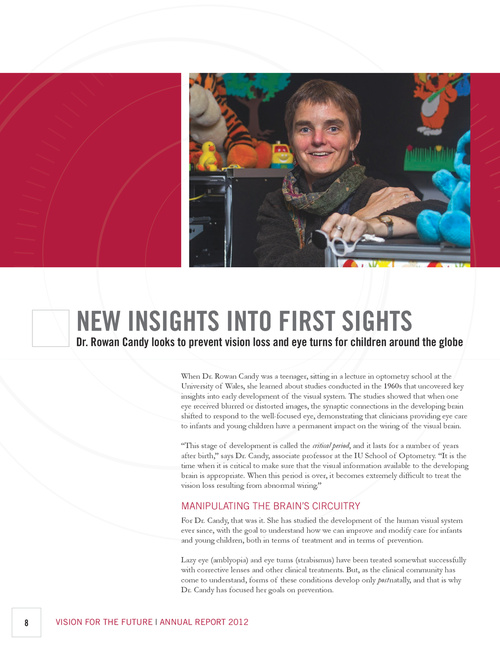
NEW INSIGHTS INTO FIRST SIGHTS
Dr. Rowan Candy looks to prevent vision loss and eye turns for children around the globe
When Dr. Rowan Candy was a teenager, sitting in a lecture in optometry school at the University of Wales, she learned about studies conducted in the 1960s that uncovered key insights into early development of the visual system. The studies showed that when one eye received blurred or distorted images, the synaptic connections in the developing brain shifted to respond to the well-focused eye, demonstrating that clinicians providing eye care to infants and young children have a permanent impact on the wiring of the visual brain. “This stage of development is called the critical period, and it lasts for a number of years after birth,” says Dr. Candy, associate professor at the IU School of Optometry. “It is the time when it is critical to make sure that the visual information available to the developing brain is appropriate. When this period is over, it becomes extremely difficult to treat the vision loss resulting from abnormal wiring.”
MANIPULATING THE BRAIN’S CIRCUITRY
For Dr. Candy, that was it. She has studied the development of the human visual system ever since, with the goal to understand how we can improve and modify care for infants and young children, both in terms of treatment and in terms of prevention. Lazy eye (amblyopia) and eye turns (strabismus) have been treated somewhat successfully with corrective lenses and other clinical treatments. But, as the clinical community has come to understand, forms of these conditions develop only post natally, and that is why Dr. Candy has focused her goals on prevention.
8
VISION FOR THE FUTURE | ANNUAL REPORT 2012